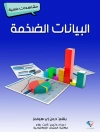The book serves as a first introduction to computer programming of scientific applications, using the high-level Python language. The exposition is example- and problem-oriented, where the applications are taken from mathematics, numerical calculus, statistics, physics, biology, and finance. The book teaches ‘Matlab-style’ and procedural programming as well as object-oriented programming. High school mathematics is a required background, and it is advantageous to study classical and numerical one-variable calculus in parallel with reading this book. Besides learning how to program computers, the reader will also learn how to solve mathematical problems, arising in various branches of science and engineering, with the aid of numerical methods and programming. By blending programming, mathematics and scientific applications, the book lays a solid foundation for practicing computational science.
Tabela de Conteúdo
Preface.- Computing with Formulas.- Loops and Lists.- Functions and Branching.- User Input and Error Handling.- Array Computing and Curve Plotting.- Dictionaries and Strings.- Introduction to Classes.- Random Numbers and Simple Games.- Object-Oriented Programming.- Sequences and Difference Equations.- Introduction to Discrete Calculus.- Introduction to Differential Equations.- A Complete Differential Equation Project.- Programming of Differential Equations.- Debugging.- Migrating Python to Compiled Code.- Technical Topics.- Bibliography.- Index.
Sobre o autor
Hans Petter Langtangen is a professor of computer science at the University of Oslo. He has formely been a professor of mechanics and is now the director of a Norwegian Center of Excellence: ‘Center for Biomedical Computing’, at Simula Research Laboratory. Langtangen has published over 100 scientific publications and written several books, including papers and a book on Python’s potential for scientific computing. He has also developed open source and commercial software systems for computational sciences.












